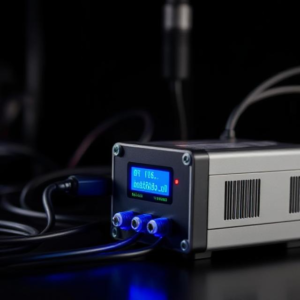In many electronic devices and power systems, you often need to convert one DC voltage level to another. This is done efficiently using DC-DC converters. These converters adjust voltage levels to meet the needs of different circuits without wasting energy.

What is a DC-DC Converter?
A DC-DC converter changes a DC input voltage to a different DC output voltage — either higher, lower, or inverted — by rapidly switching electronic components like transistors and using energy storage elements like inductors and capacitors.
Unlike simple resistors or linear regulators, DC-DC converters are highly efficient and suitable for battery-powered devices, power supplies, and electric vehicles.
1. Buck Converter (Step-Down Converter)
Purpose:
The buck converter reduces the input voltage to a lower output voltage.
How it Works:
-
Uses a switch (usually a transistor) that turns ON and OFF rapidly.
-
When ON, energy flows from the input to the output, charging an inductor.
-
When OFF, the inductor releases stored energy to the output.
-
A diode or synchronous switch provides a path for current when the transistor is off.
-
The output voltage is controlled by adjusting the duty cycle (the ratio of ON time to total switching time).
Output Voltage:
Where is the duty cycle (between 0 and 1).
Applications:
-
Powering microcontrollers or sensors from a higher battery voltage.
-
Voltage regulation in laptops and smartphones.
-
Electric vehicles to step down battery voltage.
2. Boost Converter (Step-Up Converter)
Purpose:
The boost converter increases the input voltage to a higher output voltage.
How it Works:
-
When the switch is ON, current flows through the inductor, storing energy in its magnetic field.
-
When the switch turns OFF, the inductor’s stored energy is released and added to the input voltage, increasing the output voltage.
-
A diode ensures current flows in the correct direction.
-
Output voltage depends on the duty cycle.
Output Voltage:
Applications:
-
Battery-powered devices that require a voltage higher than the battery voltage.
-
LED drivers requiring higher voltage than supply.
-
Solar power systems where panel voltage is boosted to charge batteries.
3. Buck-Boost Converter
Purpose:
The buck-boost converter can either increase or decrease the input voltage and invert its polarity (output voltage is negative relative to input ground).
How it Works:
-
Combines principles of buck and boost converters.
-
When the switch is ON, energy is stored in the inductor.
-
When OFF, energy is transferred to the output through a diode.
-
The output voltage polarity is inverted.
-
Output magnitude depends on the duty cycle.
Output Voltage:
Applications:
-
Negative voltage supplies needed in op-amps or analog circuits.
-
Systems requiring voltage polarity inversion.
-
Power supplies needing flexible voltage outputs.
Comparison of the Three Converters
| Feature | Buck Converter | Boost Converter | Buck-Boost Converter |
|---|---|---|---|
| Output Voltage | Lower than input | Higher than input | Can be higher or lower, but inverted polarity |
| Polarity | Same as input | Same as input | Inverted |
| Complexity | Moderate | Moderate | More complex |
| Applications | Step-down voltage regulation | Step-up voltage regulation | Negative voltage supply |
Why Use DC-DC Converters?
-
Efficiency: They minimize wasted energy, crucial for battery-powered devices.
-
Flexibility: Allow powering different components from one power source.
-
Size: Smaller and lighter than linear regulators for the same power rating.
-
Performance: Provide stable voltages with minimal heat generation.
Conclusion
DC-DC converters — buck, boost, and buck-boost — are essential building blocks in power electronics. Whether stepping down voltage to power a microcontroller, boosting it to drive LEDs, or generating negative voltages, these converters enable efficient, flexible power management in countless applications.










